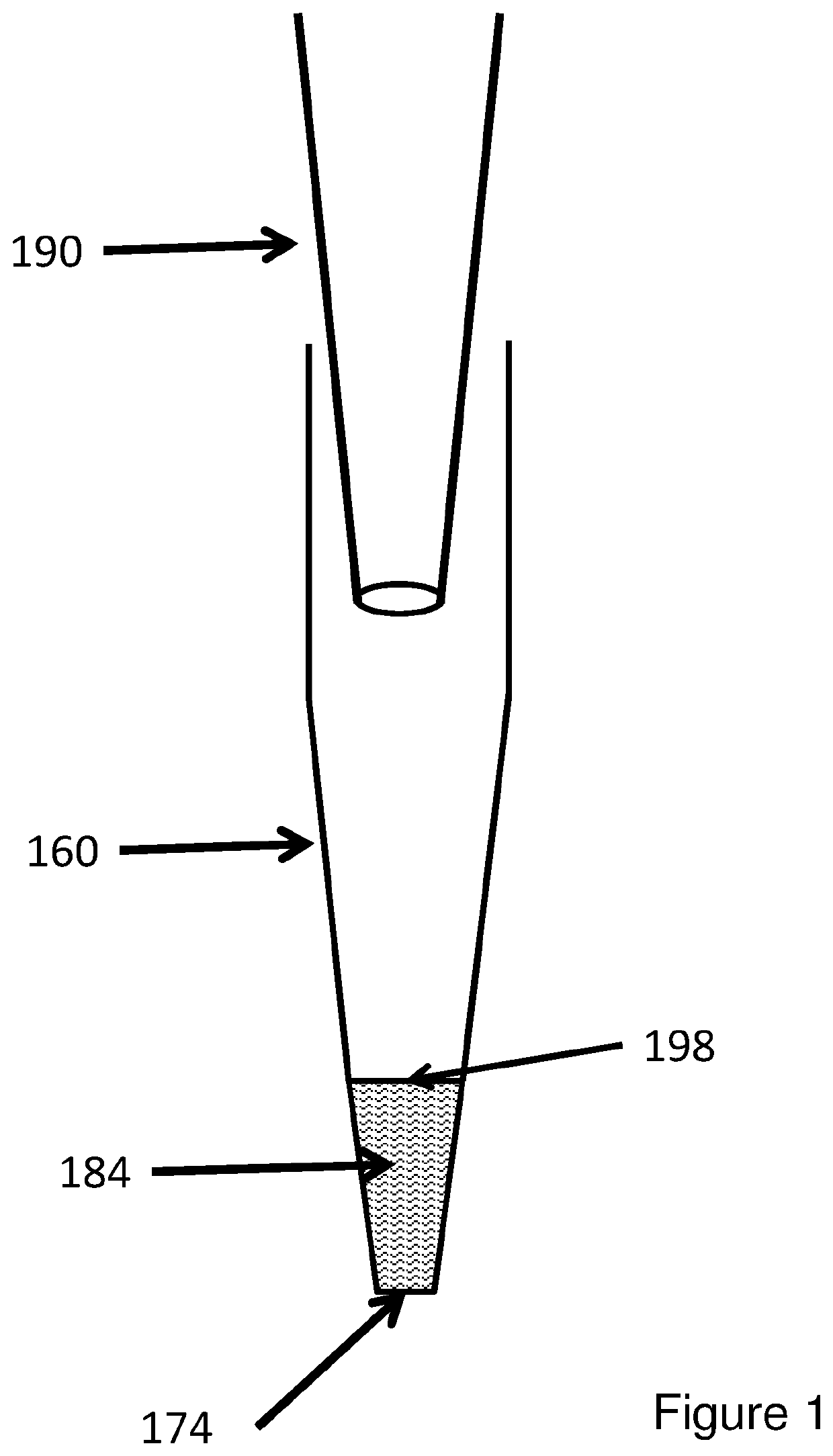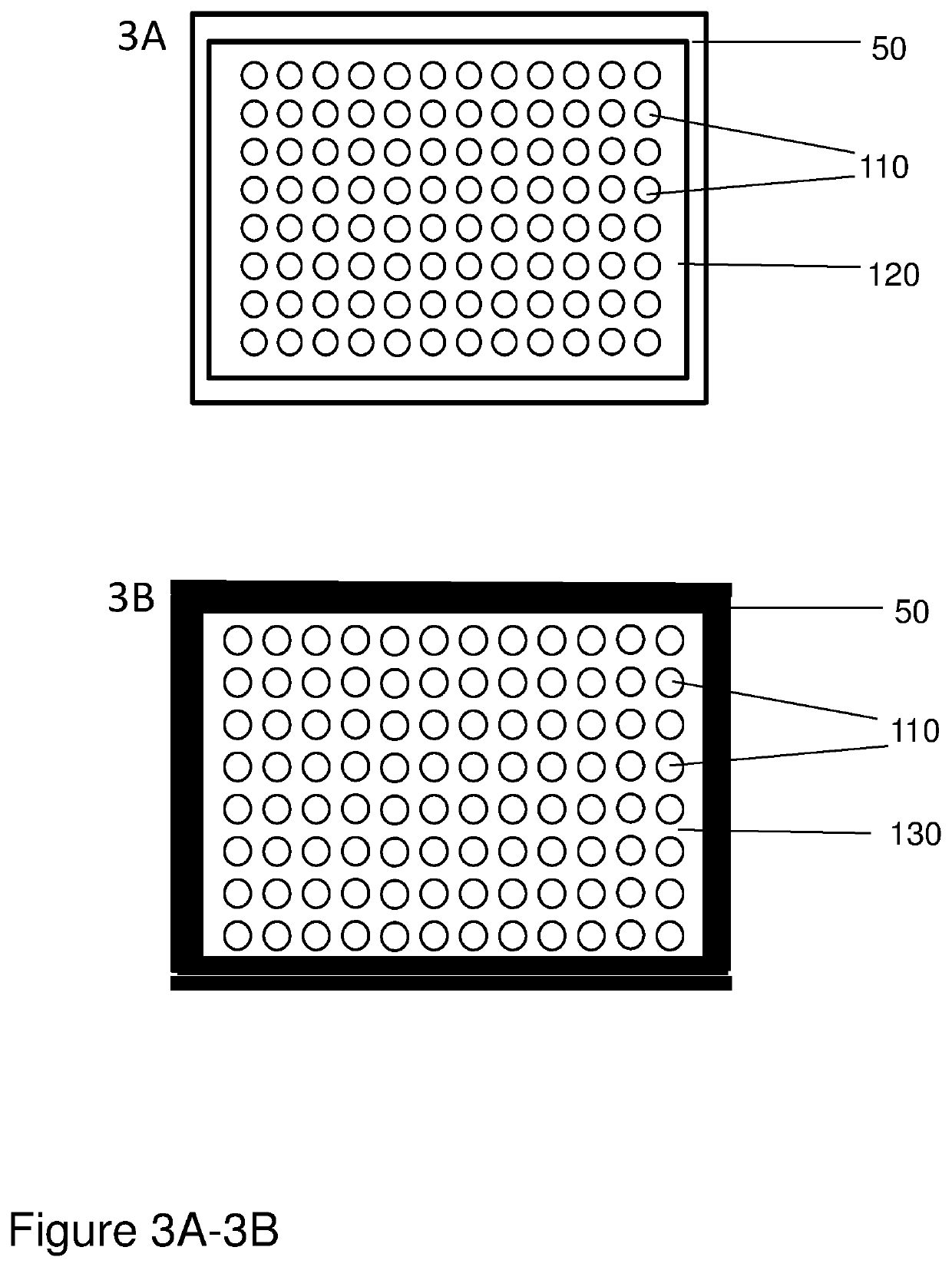Methods and devices for nucleic acid purification
a nucleic acid and purification technology, applied in the field of methods and devices for sample preparation, can solve the problems of difficult to fully automate, time-consuming, laborious, and require significant human intervention
- Summary
- Abstract
- Description
- Claims
- Application Information
AI Technical Summary
Benefits of technology
Problems solved by technology
Method used
Image
Examples
example 1
Evaluation of an 80 μL Bed Volume Pipette Tip Column Containing a Resin for Purification of Plasmid from Eukaryotic Cells
[0267]In this example, the performance of 80 μL bed volume pipette tip columns is evaluated. The pipette tip column was constructed from a 200 μL pipette tip (Tecan) and is packed with a silica-based particle resin. These columns, buffer conditions and column processing procedures are tested for the recovery of plasmid DNA from yeast. The yield and quality are assessed by UV spectrometry and agarose gel electrophoresis.
[0268]Samples are prepared by growing a single yeast colony in 25 mL medium supplemented with the appropriate carbon source to propagate the DNA vector. The liquid culture is incubated at 30° C. with shaking until the culture becomes turbid. The culture is divided into equal aliquots and subjected to centrifugation at 5,000×g for 15 minutes to pellet the yeast. The supernatant is discarded and the pellets are lysed by mortar and pestle, using liquid...
example 2
Purification of Plasmid DNA from E. coli
[0273]Columns and methods for purifying plasmid DNA from E. coli lysate were developed for 96 samples at a time. The columns used in this example were 80 μL bed columns fitted with 100 μm pore size screen bottom fits. The method was designed to operate on a Tecan EVO, Biomek FX or other robotic liquid handler. The solutions used are listed in Table 7.
[0274]E. coli cells were grown to late logarithmic phase, harvested by centrifugation and then resuspended in buffer. The plasmid purification procedure developed was as follows.[0275]1. Add 250 μL of Lysis buffer to resuspended cells using gentle pipette mixing for 3 minutes.[0276]2. Add 350 μL of Neutralization buffer to lysed culture using gentle pipette mixing for 3 minutes.[0277]3. Attach plasmid DNA pipette tip columns to 96 channel head.[0278]4. Equilibrate the pipette tip columns by cycling through the equilibration buffer.[0279]Use 2 cycles at 0.5 mL / min flow rate.[0280]5. Capture the pl...
example 3
Purification of Plasmid DNA from E. coli Pellets
[0292]Columns and methods for purifying plasmid DNA from E. coli lysate were developed for 96 samples at a time. The columns used in this example were 80 μL bed columns fitted with 100 μm pore size screen bottom fits. The method was designed to operate on a Tecan EVO, Biomek FX or other robotic liquid handler. The solutions used are listed in Table 7.
[0293]E. coli cells were grown to late logarithmic phase, harvested by centrifugation and then resuspended in 150 μL Resuspension Buffer (50 mM Tris-HCl pH 8.0, 10 mM EDTA, 400 μg / mL RNase A). The plasmid purification procedure was performed as follows.
[0294]Using wide bore pipette tips, 150 μL of Lysis buffer (200 mM NaOH, 1% SDS) was added to the resuspended cells using gentle pipette mixing. Next, the precipitation step was carried out by the addition of 210 μL of Precipitation Buffer (0.9 M potassium acetate pH 4.8, 4.2 M guanidinium hydrochloride) to lysed cells using gentle pipette m...
PUM
| Property | Measurement | Unit |
|---|---|---|
| pore size | aaaaa | aaaaa |
| pore size | aaaaa | aaaaa |
| concentration | aaaaa | aaaaa |
Abstract
Description
Claims
Application Information
 Login to View More
Login to View More - R&D
- Intellectual Property
- Life Sciences
- Materials
- Tech Scout
- Unparalleled Data Quality
- Higher Quality Content
- 60% Fewer Hallucinations
Browse by: Latest US Patents, China's latest patents, Technical Efficacy Thesaurus, Application Domain, Technology Topic, Popular Technical Reports.
© 2025 PatSnap. All rights reserved.Legal|Privacy policy|Modern Slavery Act Transparency Statement|Sitemap|About US| Contact US: help@patsnap.com



